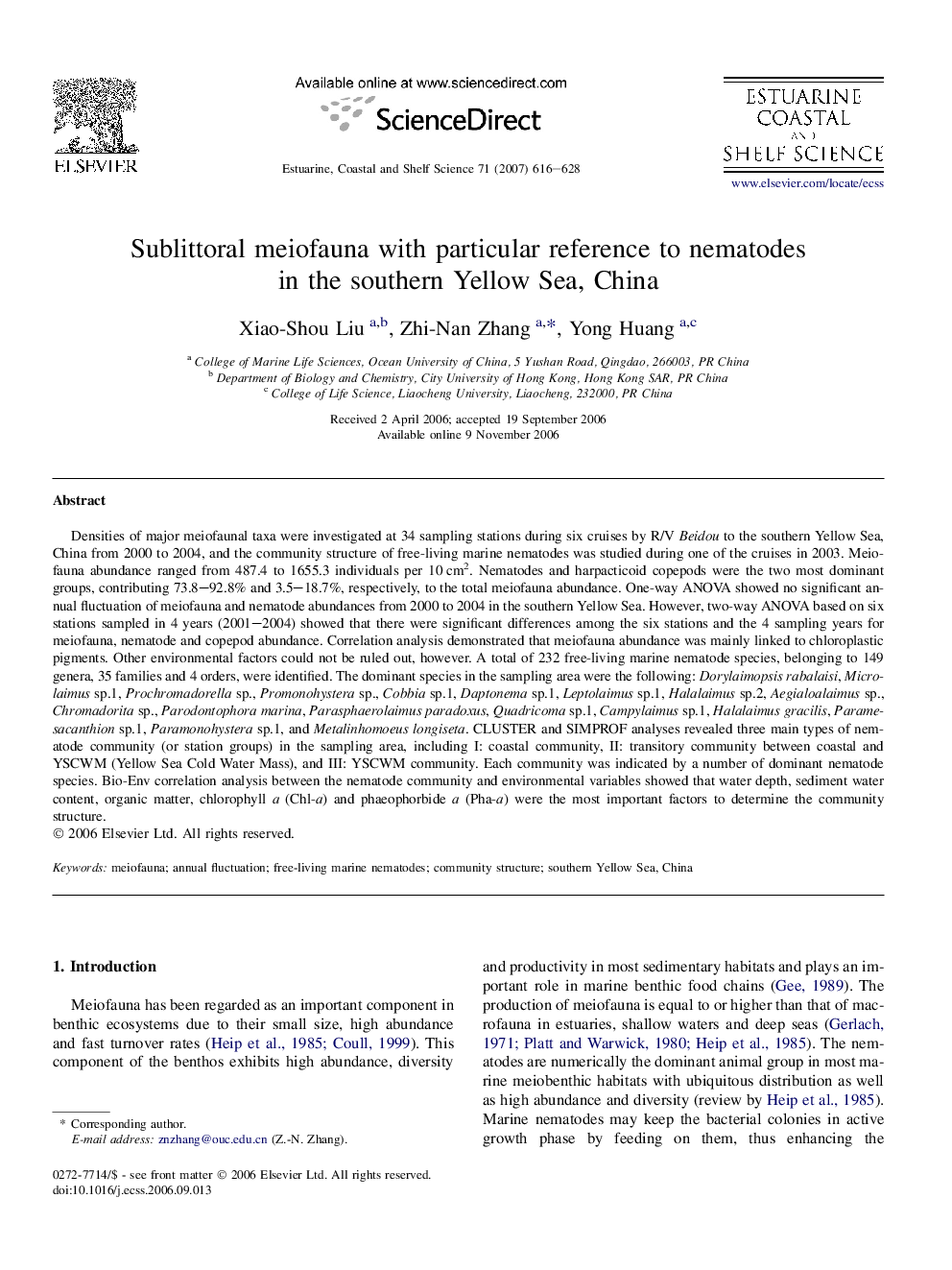| کد مقاله | کد نشریه | سال انتشار | مقاله انگلیسی | نسخه تمام متن |
|---|---|---|---|---|
| 4542438 | 1626706 | 2007 | 13 صفحه PDF | دانلود رایگان |

Densities of major meiofaunal taxa were investigated at 34 sampling stations during six cruises by R/V Beidou to the southern Yellow Sea, China from 2000 to 2004, and the community structure of free-living marine nematodes was studied during one of the cruises in 2003. Meiofauna abundance ranged from 487.4 to 1655.3 individuals per 10 cm2. Nematodes and harpacticoid copepods were the two most dominant groups, contributing 73.8–92.8% and 3.5–18.7%, respectively, to the total meiofauna abundance. One-way ANOVA showed no significant annual fluctuation of meiofauna and nematode abundances from 2000 to 2004 in the southern Yellow Sea. However, two-way ANOVA based on six stations sampled in 4 years (2001–2004) showed that there were significant differences among the six stations and the 4 sampling years for meiofauna, nematode and copepod abundance. Correlation analysis demonstrated that meiofauna abundance was mainly linked to chloroplastic pigments. Other environmental factors could not be ruled out, however. A total of 232 free-living marine nematode species, belonging to 149 genera, 35 families and 4 orders, were identified. The dominant species in the sampling area were the following: Dorylaimopsis rabalaisi, Microlaimus sp.1, Prochromadorella sp., Promonohystera sp., Cobbia sp.1, Daptonema sp.1, Leptolaimus sp.1, Halalaimus sp.2, Aegialoalaimus sp., Chromadorita sp., Parodontophora marina, Parasphaerolaimus paradoxus, Quadricoma sp.1, Campylaimus sp.1, Halalaimus gracilis, Paramesacanthion sp.1, Paramonohystera sp.1, and Metalinhomoeus longiseta. CLUSTER and SIMPROF analyses revealed three main types of nematode community (or station groups) in the sampling area, including I: coastal community, II: transitory community between coastal and YSCWM (Yellow Sea Cold Water Mass), and III: YSCWM community. Each community was indicated by a number of dominant nematode species. Bio-Env correlation analysis between the nematode community and environmental variables showed that water depth, sediment water content, organic matter, chlorophyll a (Chl-a) and phaeophorbide a (Pha-a) were the most important factors to determine the community structure.
Journal: Estuarine, Coastal and Shelf Science - Volume 71, Issues 3–4, February 2007, Pages 616–628